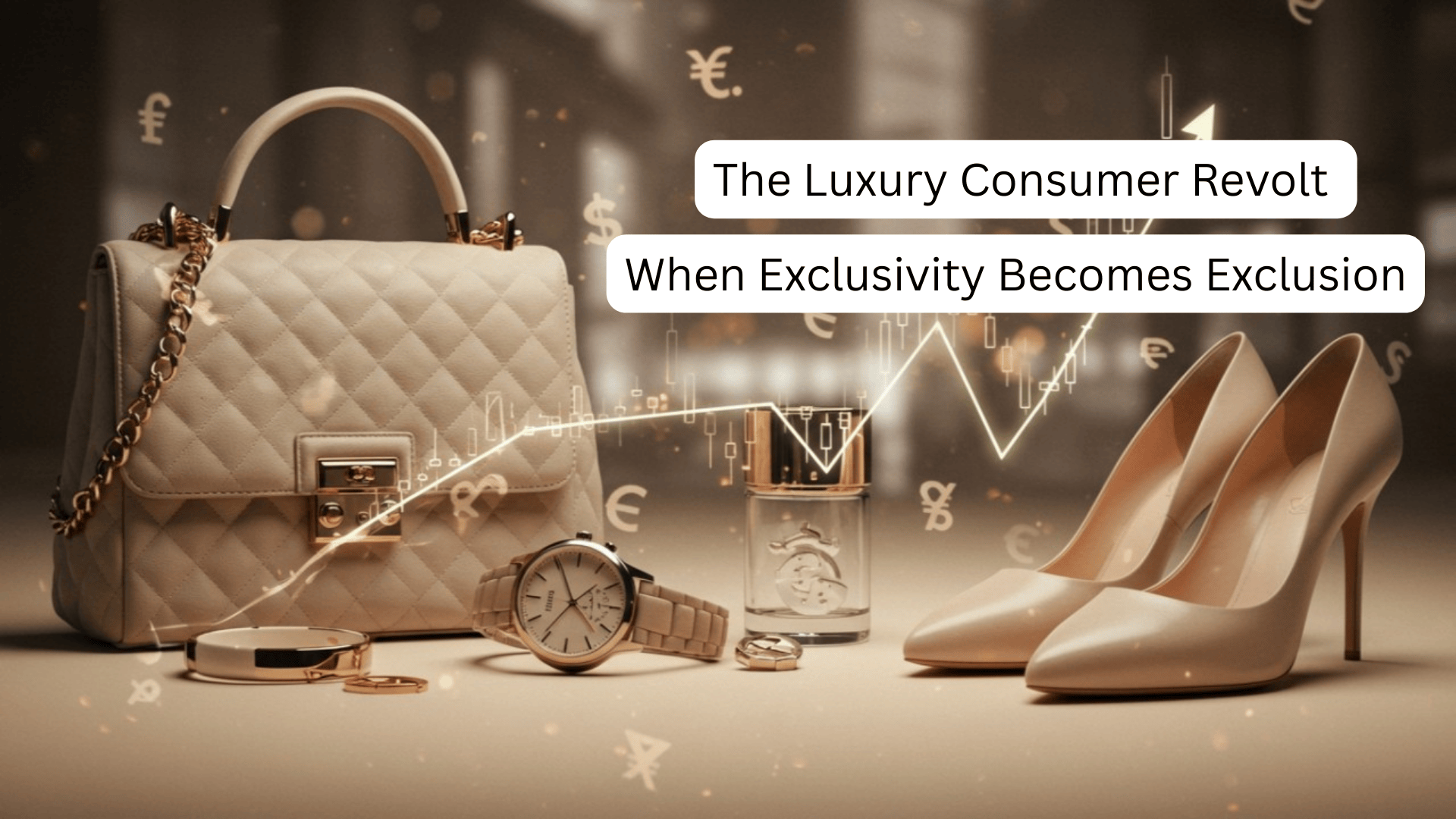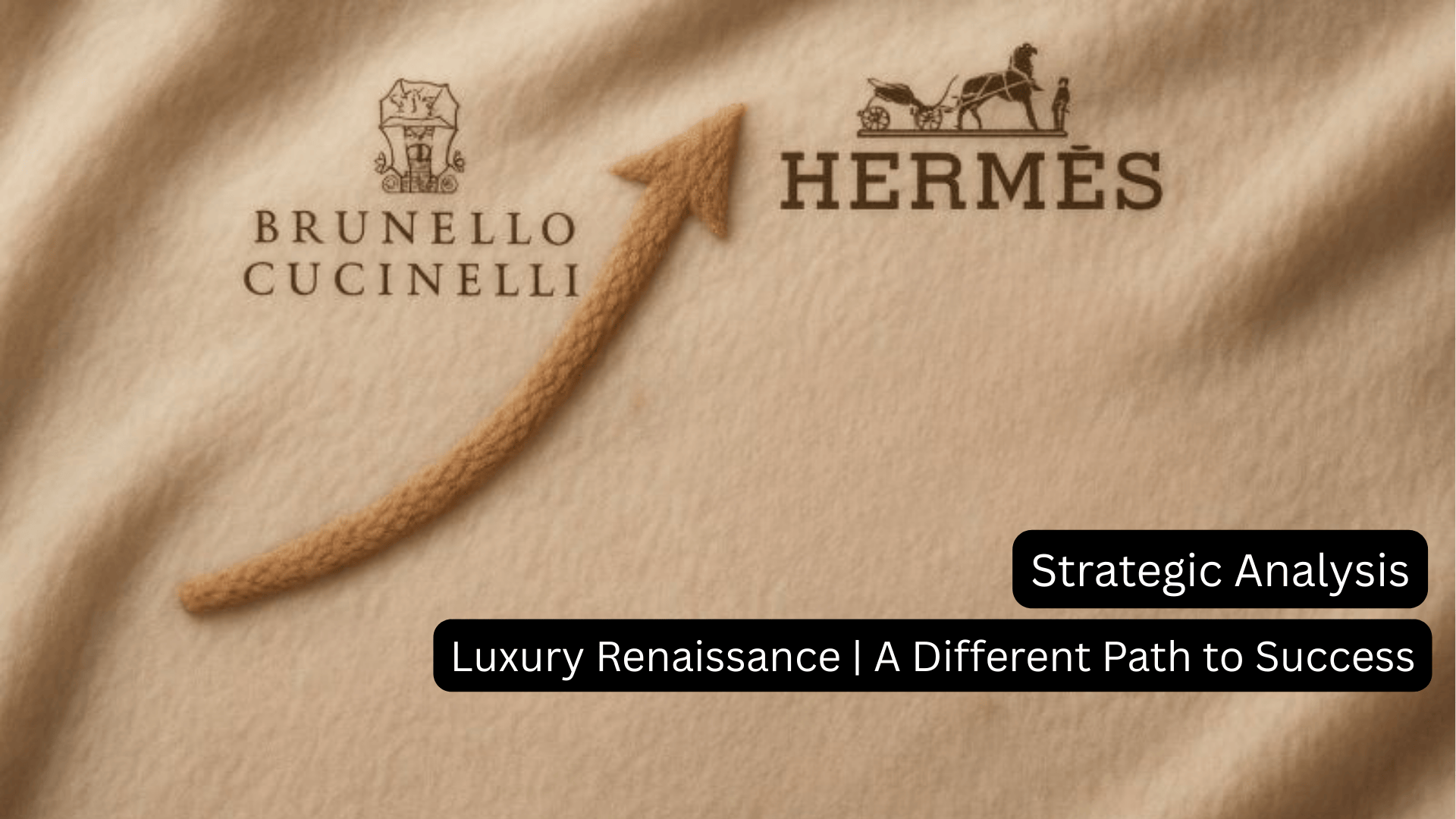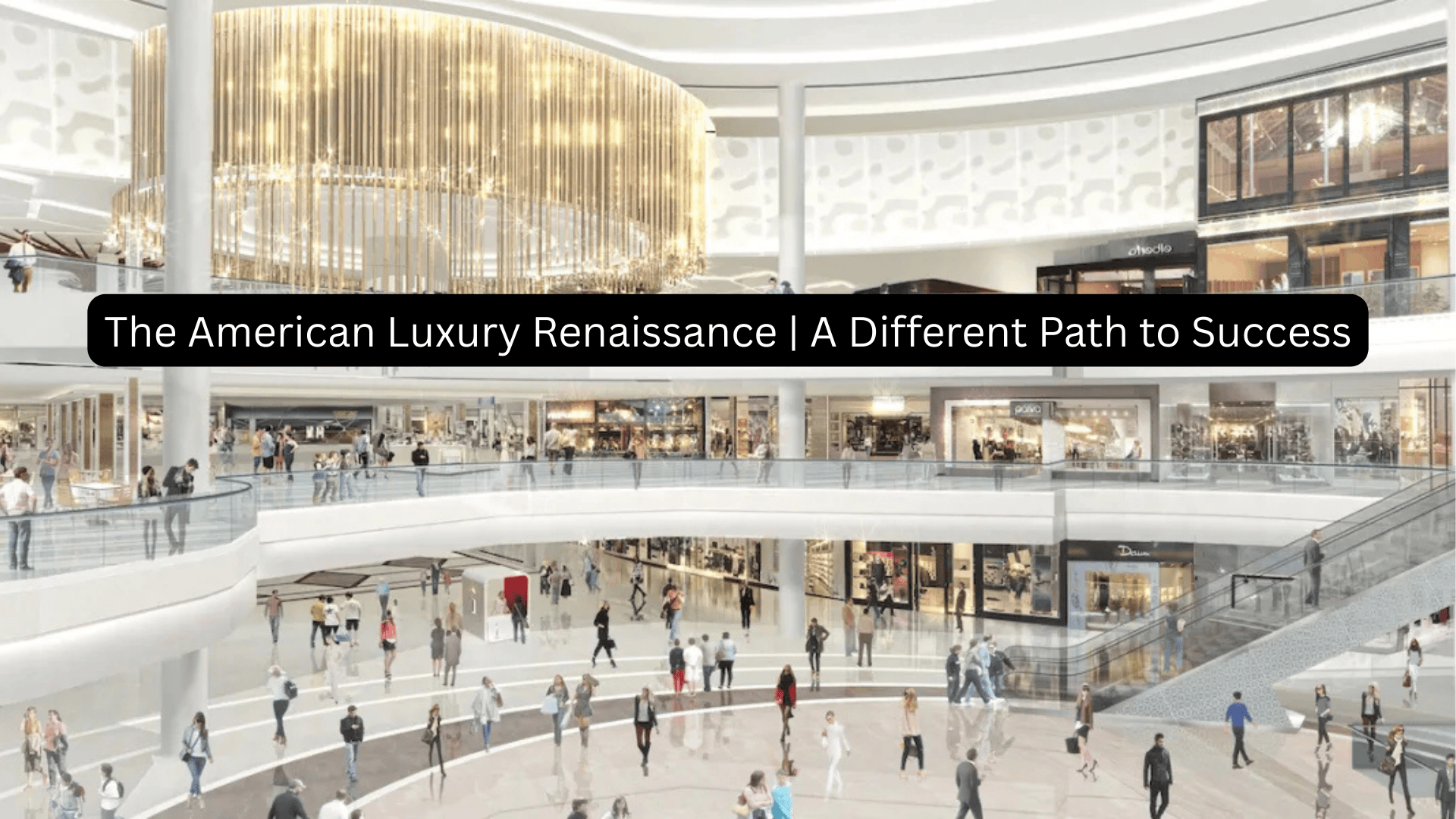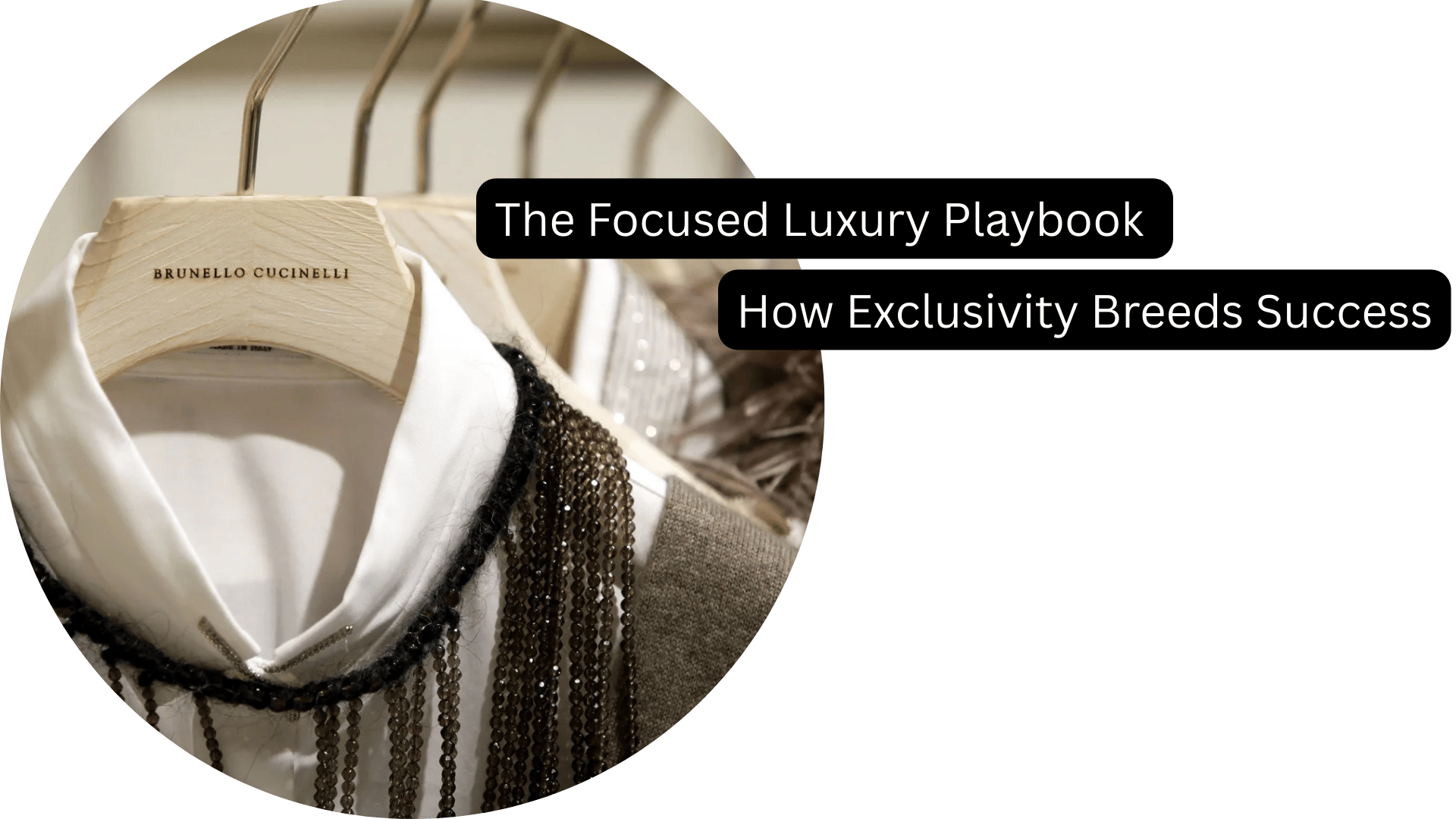
The Luxury Consumer Revolt | When Exclusivity Becomes Exclusion
Fifty million luxury consumers abandoned the market as prices rose 52% since 2019, validating our strategic analysis. Shopping became bureaucratic rather than enjoyable, creating "greedflation" backlash. This explains why focused authentic luxury and accessible premium succeed while confused positioning fails. Digital disruption made scarcity meaningless, consumers shifted to experiential wealth, and alternatives emerged from vintage to "dupes." Consumer choice now determines luxury strategy success.
#LuxuryConsumers, #ConsumerRevolt, #Greedflation, #LuxuryPricing, #AuthenticLuxury, #LuxuryStrategy, #ConsumerBehavior, #ExperientialWealth, #LuxuryBacklash, #DigitalDisruption, #StatusSymbols, #DupeCulture, #VintageLuxury, #ConsumerChoice, #LuxuryRecovery, #BrandAuthenticity, #LuxuryFuture, #ConsumerEmpowerment

Preview | The American Luxury Renaissance - A Different Path to Success
American luxury brands Coach and Ralph Lauren are outperforming struggling European rivals with +50%+ stock gains and double-digit sales growth. They succeeded by maintaining accessible pricing ($200-$500) while European brands priced themselves out of reach, capturing young consumers and growing strongly in China. This reveals a three-tier luxury hierarchy: ultra-luxury focused (Hermès), accessible luxury done right (Americans), and confused middle (struggling Europeans). Strategic clarity beats geographic heritage.
#AmericanLuxury, #LuxuryBrands, #Coach, #RalphLauren, #Tapestry, #LuxuryStrategy, #AccessibleLuxury, #EuropeanLuxury, #LuxuryMarket, #BrandStrategy, #LuxuryTiers, #YoungConsumers, #GenZ, #Millennials, #PricingStrategy, #LuxuryGrowth, #ChinaLuxury, #TradingDown, #BrandPositioning, #LuxuryRetail, #MarketShare, #LuxuryStocks, #FashionBusiness, #LuxuryIndustry, #LuxuryConsumers, #BrandInvestment, #MarketingStrategy, #LuxuryCompetition, #StrategicClarity, #BrandDifferentiation, #LuxuryValuation, #GlobalLuxury, #LuxuryExpansion, #ConsumerBehavior, #LuxuryTrends, #IndustryAnalysis, #LuxuryPerformance, #AmericanBrands, #LuxuryRevival, #StrategicFocus

The American Luxury Renaissance | A Different Path to Success
American luxury brands are surging while European counterparts struggle, revealing a new competitive dynamic in the luxury landscape. Tapestry (Coach) and Ralph Lauren have delivered exceptional stock returns (+55% and +29% respectively in 2025) and strong sales growth (+13% and +11%), while European brands averaged -3% decline.
This divergence highlights a three-tier luxury hierarchy: ultra-luxury focused brands (Hermès, Brunello Cucinelli) succeeding at the top, accessible luxury done right (American brands) winning in the middle market, and confused European brands struggling between strategies. American brands succeeded by maintaining disciplined pricing ($200-$500 sweet spot vs. European brands going 10x higher), targeting young consumers abandoned by price-aggressive Europeans, and investing heavily in brand building (up to 10% of sales on advertising). They're capturing customers who were "priced out" of European luxury, with significant growth in China (+30% for Ralph Lauren, +22% for Coach) as consumers "trade down" to affordable luxury.
European brands face a strategic dilemma: double down on ultra-luxury exclusivity or compete for accessible luxury they inadvertently abandoned. The success demonstrates that strategic clarity and consistent execution matter more than geographic origin - whether choosing ultra-luxury or accessible luxury, confusion in the middle satisfies no one.
#AmericanLuxury, #LuxuryBrands, #Coach, #RalphLauren, #Tapestry, #LuxuryStrategy, #AccessibleLuxury, #EuropeanLuxury, #LuxuryMarket,

Preview | The Focused Luxury Playbook - How Exclusivity Breeds Success
In our recent exploration of the luxury industry's strategic crossroads, we examined how two contrasting approaches—LVMH's diversified conglomerate model versus Hermès' focused ultra-luxury strategy—are producing dramatically different market results. We discussed how the industry faces a fundamental choice between democratization and exclusivity, with the market increasingly rewarding focused approaches over diversified expansion. Now, fresh earnings results from Brunello Cucinelli provide compelling real-time validation of this focused luxury thesis in action.
#luxury, #brunellocucinelli, #hermes , #luxuryindustry, #luxurytrends, #luxurybusiness, #focussedluxuryplaybook, #luxurybusinessstrategy

The Focused Luxury Playbook - How Exclusivity Breeds Success
In our recent exploration of the luxury industry's strategic crossroads, we examined how two contrasting approaches—LVMH's diversified conglomerate model versus Hermès' focused ultra-luxury strategy—are producing dramatically different market results. We discussed how the industry faces a fundamental choice between democratization and exclusivity, with the market increasingly rewarding focused approaches over diversified expansion. Now, fresh earnings results from Brunello Cucinelli provide compelling real-time validation of this focused luxury thesis in action.
The luxury industry's strategic realignment continues, and focused players like Cucinelli are writing the playbook for sustainable luxury success in an increasingly complex global market.
#luxury, #brunellocucinelli, #hermes , #luxuryindustry, #luxurytrends, #luxurybusiness

The Burberry Rebuild Is Starting to Work — Step by Step
Burberry has begun to turn the corner under CEO Josh Schulman, with Q1 FY25 results showing stronger-than-expected performance despite continued macroeconomic challenges. Comparable store sales declined just 1% versus a 21% drop a year ago, and global conversion rates are up significantly—led by local customers rather than tourists. Strategic shifts include repositioning the brand around “timeless British luxury,” expanding pricing architecture, and launching immersive campaigns like the Highgrove and Ibiza activations. Schulman is also driving operational efficiency, including a 20% planned headcount reduction by 2027. With a 27% rise in share price year-to-date and potential re-entry into the FTSE 100, Burberry’s multiyear transformation plan appears to be gaining traction.
#Burberry, #LuxuryFashion, #JoshSchulman, #BrandTurnaround, #BritishLuxury, #RetailStrategy, #GlobalSales, #LuxuryRetail, #Q1Results, #FashionBusiness, #ConsumerTrends, #FTSE100, #ConversionRate, #LuxuryMarketing

Kering Eyes Fifth Avenue Sale Amid Luxury Slowdown
Kering, the luxury conglomerate that owns Gucci, is in exclusive talks to sell a majority stake in its Fifth Avenue building in New York to private equity firm Ardian. This is part of Kering’s strategy to unlock capital while maintaining flagship locations through leasebacks, as the luxury market slows down and Gucci’s sales slump. The move follows similar deals, including one in Paris earlier this year, as Kering shifts focus toward brand revival and navigates a challenging retail environment.
#LuxuryRetail, #Kering, #Ardian, #Gucci, #RealEstate, #LuxuryStrategy, #RetailTrends, #LuxuryMarket, #FifthAvenue, #InvestmentStrategy, #LuxuryBrands

Trade Tensions Dampen 2025 Luxury Market Outlook
The escalating trade war between the US and China is casting a shadow over the luxury market’s hopes for a rebound in 2025. With both nations increasing tariffs, the luxury sector faces a projected 2% decline in revenue, reversing earlier growth forecasts. This economic strain is intensified by shaky consumer confidence and the unpredictability of trade policies. While most luxury brands are expected to experience downturns, Hermès remains an exception, likely to maintain its growth trajectory. The industry braces for a challenging year, with the broader economic implications of these tariffs adding to the uncertainty.
#LuxuryMarket, #TradeWar, #USChinaRelations, #EconomicImpact, #LuxuryBrands, #MarketForecast, #Hermes, #FashionIndustry, #GlobalEconomy, #ConsumerConfidence